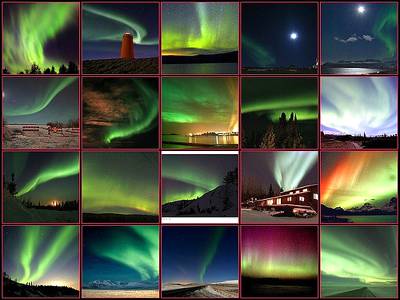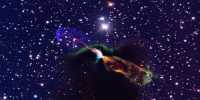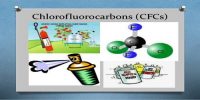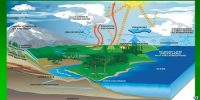Aurora: Multicolored lights that appear in the upper atmosphere (ionosphere) over the Polar Regions and visible from locations in the middle and high latitudes. It caused by the interaction of solar wind with oxygen and nitrogen gas in the atmosphere. Aurora in the Northern Hemisphere is called aurora borealis and aurora Australia in the Southern Hemisphere. The phenomenon was named after the Roman goddess of the dawn, Aurora, and the Greek god of the north wind, Boreas.
They are produced when the magnetosphere is adequately distressed by the solar wind that the trajectories of charged particles in both solar wind and magnetospheric plasma, mostly in the form of electrons and protons, precipitate them into the higher atmosphere due to Earth’s magnetic field, where their energy has vanished.

An aurora is an innate light show that shimmers in the sky. Multicolored blue, red, yellow, green, and orange lights shift softly and modify form like softly blowing curtains. They are just noticeable at night, and generally only come into view in lower Polar Regions. Collisions with oxygen create red and green auroras, while nitrogen produces the pink and purple colors. This reaction encircles the polar regions of the earth and occurs at an altitude of 40-400 miles (65-650 km) in a zone called the “Auroral Oval.”
The colors in the aurora were also a foundation of mystery throughout human history. But science says that dissimilar gases in Earth’s atmosphere give off dissimilar colors when they are excited. Oxygen gives off the green color of the Aurora, for example. Nitrogen causes blue or red colors.
















